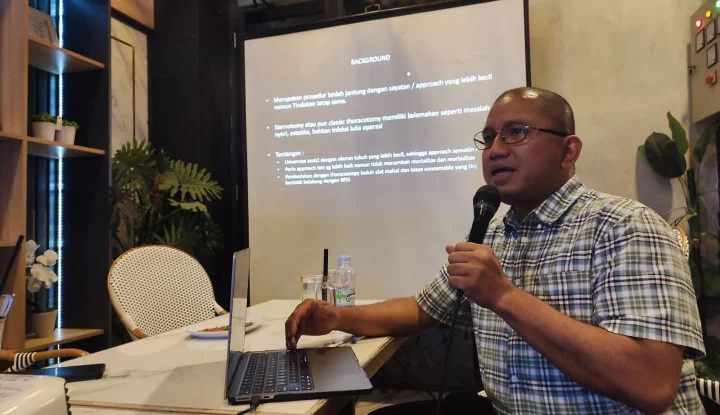Indonesia’s healthcare system continues to evolve with technological advancements and innovative practices, especially in specialized care. One significant development is taking place at Siloam Hospitals Lippo Village, which has introduced Minimally Invasive Cardiac Surgery (MICS) for patients suffering from congenital heart disease. This new surgical technique not only represents a leap in medical capability but also enhances the quality of patient care across the board.
As one of Indonesia's leading private hospitals, Siloam is embracing international standards and pioneering treatments. Their adoption of MICS is part of a broader vision to reduce surgical trauma, improve recovery time, and ensure long-term health outcomes. In this article, we explore how this innovation works, its benefits, and its significance for Indonesian and Southeast Asian healthcare.
What Is Minimally Invasive Cardiac Surgery?
Minimally Invasive Cardiac Surgery refers to heart surgery performed through tiny incisions—typically between 4 and 6 centimeters—rather than the large cuts required in conventional open-heart surgeries. Traditional procedures often involve a sternotomy, where the chest bone is split to allow access to the heart. In contrast, MICS uses specialized instruments and cameras inserted through small entry points between the ribs, sparing much of the surrounding tissue.
In the context of congenital heart defects, this technique provides a safer and more comfortable alternative. Congenital heart disease encompasses a range of structural abnormalities in the heart that are present from birth. These conditions often require corrective surgery early in life. By minimizing physical trauma, MICS can drastically improve both short- and long-term outcomes for these patients.
Siloam Hospitals is using this technique in its flagship Lippo Village location, where advanced facilities and a multidisciplinary team support its implementation.
Why This Matters: Benefits for Patients
There are multiple benefits of MICS that distinguish it from conventional methods, making it particularly attractive for patients and doctors alike. Below are some key advantages:
1. Faster Recovery Time
One of the most prominent advantages is the shorter recovery period. Patients undergoing minimally invasive procedures typically leave the hospital much sooner than those who have had open-heart surgery. Many resume normal activities within a few weeks rather than months.
2. Reduced Infection Risk
Since the surgical wound is smaller and fewer internal structures are exposed, the risk of post-surgical infections is significantly lower. This is especially important for patients with compromised immune systems or other underlying conditions.
3. Minimal Scarring
Smaller incisions mean smaller scars, which is a major concern for patients, especially younger individuals. This cosmetic benefit also contributes to improved mental well-being post-surgery.
4. Less Pain and Discomfort
The procedure avoids cutting through the breastbone, leading to reduced pain levels and less need for postoperative pain medications. This directly contributes to better mobility and faster rehabilitation.
5. Cost Efficiency in the Long Run
Although high-tech procedures may seem costly upfront, faster recovery and reduced complications ultimately make MICS more cost-effective. Patients avoid prolonged hospital stays and extensive aftercare.
Dr. Budi Rahmat, a cardiovascular and thoracic surgery specialist at Siloam Hospitals, emphasized that MICS is not only a medical advancement but also a patient-centric solution. “Our goal is to enhance the quality of life for patients with congenital heart defects by offering effective, safe, and less invasive surgical options,” he said in a recent press briefing.
How Siloam Hospitals is Leading the Way
Siloam Hospitals Lippo Village is already recognized as one of Indonesia's most advanced healthcare institutions. Accredited multiple times by the Joint Commission International (JCI), the hospital is setting high standards for safety, service, and surgical excellence.
The launch of MICS reinforces Siloam’s commitment to cardiac care and patient innovation. The program involves a collaboration between highly trained surgeons, cardiologists, anesthesiologists, and intensive care specialists, all of whom are familiar with international treatment protocols. With the addition of MICS, the hospital is now capable of handling a broader spectrum of heart conditions with a more patient-friendly approach.
More importantly, Siloam aims to use this procedure to expand access to advanced heart treatments across Indonesia. By training other regional medical professionals and equipping other branches with similar capabilities, the benefits of MICS could soon be accessible to thousands more.
The Broader Impact on Indonesia’s Healthcare Landscape
The availability of Minimally Invasive Cardiac Surgery in Indonesia signifies a major step forward in reducing dependency on overseas medical treatment. Historically, many Indonesians have traveled abroad—especially to Singapore or Malaysia—for complex surgeries. Innovations like this could reverse that trend, making Indonesia a regional hub for high-quality care.
Additionally, this aligns with the government’s long-term goal of improving the local healthcare system’s self-reliance, particularly in specialized fields like cardiology and oncology. Siloam’s initiative supports this vision and showcases what private-public healthcare collaboration can achieve.
Conclusion
Minimally Invasive Cardiac Surgery is transforming how congenital heart conditions are treated, and Siloam Hospitals Lippo Village is leading this transformation in Indonesia. With its proven benefits—faster recovery, fewer complications, and better outcomes—MICS is setting a new benchmark for cardiac care. Siloam’s investment in such advanced procedures reflects its long-standing commitment to elevating the healthcare experience for all Indonesians.
For patients seeking world-class heart treatment within the country, Siloam’s adoption of MICS offers a safer, faster, and more effective alternative. As this technology becomes more widely available, the future of cardiac surgery in Indonesia looks brighter than ever.
Read More






 Monday, 15-12-25
Monday, 15-12-25







